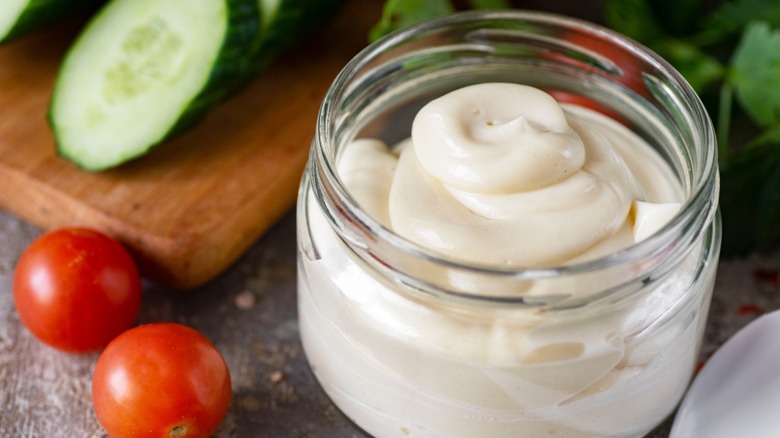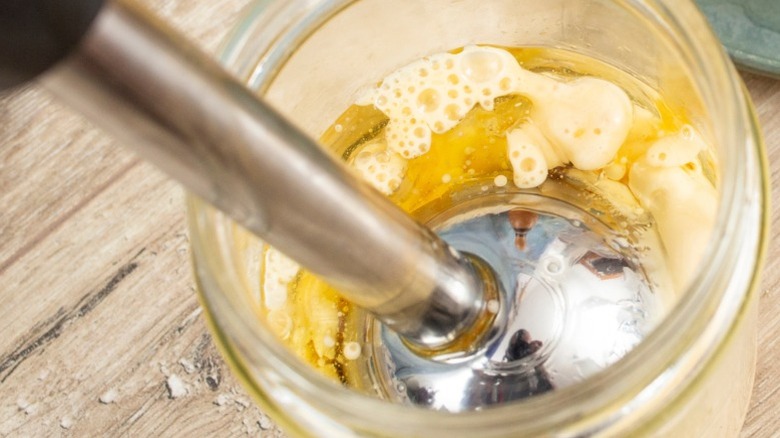You Can Totally Salvage Frozen Mayo, Here's How
We may receive a commission on purchases made from links.
There are some foods you should never freeze, and mayonnaise is at the top of that no-freeze list. But if you're reading this, you're probably one of the unlucky people who just found that out the hard way. Maybe your fridge temperature was a tad too low or it was in the same bag as your Costco frozen goods haul. No judgment here. There's even good news: There's a way to salvage it, and it's actually not that difficult.
In fact, the reason it's a bad idea to freeze mayo is the same reason you can fix it. Mayo is an emulsion. That means it's made of ingredients that don't naturally mix — oil and water-based components like egg yolks and lemon juice — with the help of an emulsifier, in this case, lecithin-containing egg yolk. When you use a blender or whisk to mix it, you create tiny droplets of oil, which the lecithin helps suspend in the water, creating a relatively fragile but stable mixture. Freezing destroys that stability.
That's because the water freezes but the oil doesn't, breaking down the emulsion structure and creating an unpleasant-looking mess once it's thawed.
How to save frozen mayo
Saving mayo from its frozen state requires one appliance only: a blender, preferably an immersion blender. If you don't already have one, you can probably get one from Amazon (perhaps by the time it defrosts if you're a Prime member). The Turelar five-speed immersion blender comes with loads of attachments, or you can opt for a cheaper starter model with the attachment-less Ovente two-speed immersion blender. Or you can scoop it all into your countertop blender and blend it.
With any luck, it will re-emulsify. Keep blending until it starts to come back together, keeping in mind the texture will be thinner than it was before it was frozen. If it struggles to come back together at all, add a little water.
Reblended mayo is unlikely to reach its original spreadable consistency after freezing. It's best to use it for baked dishes such as casseroles or salad dressings, where the altered texture won't be noticeable. The mixture will also likely start separating again when you store re-emulsified mayo. The more you blend and re-blend, the more you wear down the delicate emulsion you have manufactured between the water and oil. Realistically, you've got one shot to resuscitate your frozen mayo. After that, it's probably just best to head out and purchase a new bottle. The good news is we've ranked popular mayo brands to make deciding which one easier for you.

